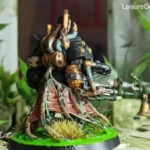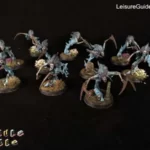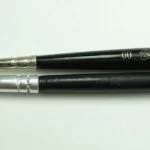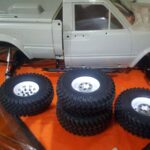cleaning miniatures and models before painting (Best Guide)
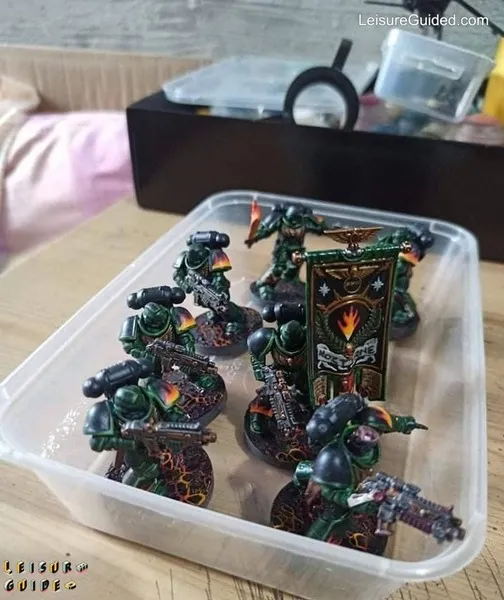
One thing every hobbyist should know is that you can’t paint your minis without cleaning them.
Painting your plastic models and minis is an essential part of model building. It gives your kits that showroom display finishes you need to feel a sense of achievement.
In this guide, we help you learn how to clean your models and minis and why cleaning is necessary before painting.
it Is necessary to clean models And minis Before Painting
Plastic models and miniatures are made with injection molds.
To produce scale model kits and miniatures, hobby-grade manufacturers use a special oil called mold release to get a perfectly finished product.
While manufacturers wash plastic kits before boxing them, the mold release doesn’t clean off entirely, making your kit fit slippery and oily out of the box.
The slippery nature of the mold release will make painting the model difficult. So, that needs to go.
Benefits of cleaning plastic model parts
- Washing your models ensures paints stick well
- It helps to prevent the paint from chipping easily
- On top of that, they feel so much better after washing, even if you never plan on painting them
Best Way to clean miniatures and models before painting
Cleaning your plastic models is pretty easy. You can either choose an alcohol-based cleaner, an ultrasonic cleaning machine, or simply hot water and dish soap to clean the model.
1. Aceton/Alcohol
Acetone is a cleaning agent and probably the strongest cleaning agent among the others due to its alcohol base.
Acetone helps you clean your model via a process called spot cleaning because the alcohol content means it evaporates quickly.
Simply put, all you need to do is to dip a Q-tip in the bottle of acetone and work it back and forth on the surface of your model.
The only downside with using this cleaning agent is that they produce toxic fumes. So, you will need to ventilate the area to avoid inhaling the fumes. However, once dry, your model will have one of the cleanest surface paints it can adhere to.
2. Ultrasonic cleaning machine
If you don’t mind spending some cash, consider cleaning your models with an ultrasonic cleaning machine.
The ultrasonic cleaning machine is big enough, so it works well for resin miniatures in large quantities and large models.
However, unlike the spot-cleaning process of acetone, an Ultrasonic cleaning machine cleans plastic through water pulsing and vibration scrubbing methods.
When you fit multiple tanks into the machine and turn it on, it starts to buzz, making the contents in the machine shake and jam together. This buzzing is what we call vibration scrubbing.
If you are using ultrasonic cleaning, make sure you do it right:
- Fill the tub connected to the machine with some water and soap.
- Set the kit parts in a basket found in the machine.
- Turn the machine on and set a timer for how long you want it to clean your plastic pieces. Once it turns on, it automatically pulses the water and soap into the basket.
- The machine uses vibrations to scrub your miniature’s surface.
- Once the timer hits zero, pull the models out and rinse them with water.
- Allow the model to dry.
3. Hot water and dish soap
This is by far the easiest way to clean your plastic models and miniatures.
It allows you to clean the parts of your model and small minis via brush scrubbing.
To clean your unpainted mini or model:
- Get all the parts and throw them in a bowl with soap and water.
- Be sure to use lukewarm water. Cold water won’t work well, and hot water will warp your plastic.
- Get an old toothbrush. Then, scrub each piece at a time and make sure to go over the fine details.
- Once scrubbed, rinse with lukewarm water and leave them to dry before painting.
Hard-core Painters wear gloves after the model is clean
Some mini painters will tell you that you need to wear gloves after cleaning the model.
Wearing gloves keeps your model or miniature safe from oils that our hands produce naturally.
Although only hard-core-pro-painters take this kind of attention to detail when cleaning before painting.
Most painters will just make sure to wash their hands before handling their clean model.
Not any type of paint Requires Cleaning
If you use alcohol-based paints, cleaning your model isn’t necessary.
Alcohol-based paints like Tamiya acrylics, enamels, and lacquer paints stick well to the plastic kit due to their durable alcohol
On the other hand, acrylic paints are water-based and if your mini has oily spots, the paint won’t stick to the model. The paint will chip easily, unlike alcohol-based paints.
When Should You Clean Your Miniatures And Models
You should wash your models and miniatures before assembling them.
Washing your models after assembly would mean that some parts of the model would retain the mold release, making the paints feel slippering and chip easily. Hence, paint won’t last long.
Conclusion
However, your painting will only last long and adhere better with proper painting preparations like cleaning. Just choose the acetone, ultrasonic cleaning machine, or hot water and dish soap cleaning method to clean the model before painting.

